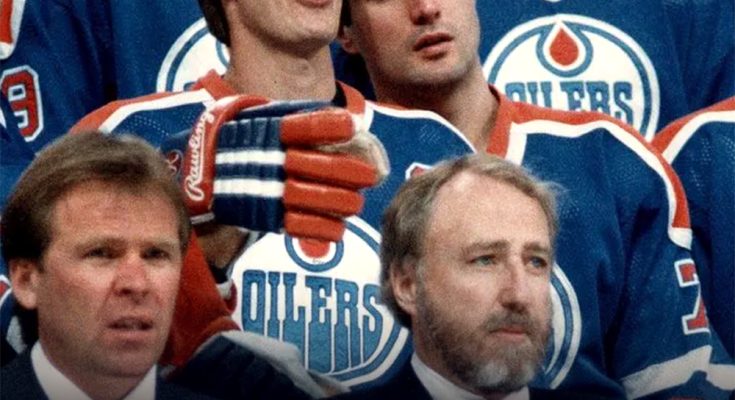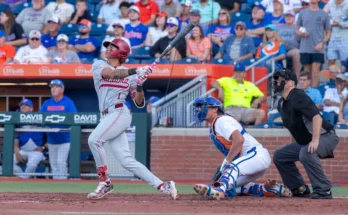“How the 1980s Edmonton Oilers Revolutionized Hockey — The Dynasty That Redefined the Game with Speed, Skill, and Scoring Brilliance”
The Edmonton Oilers of the 1980s didn’t just dominate the NHL—they transformed it. In a league steeped in a tradition of grit, conservative tactics, and defensive-minded strategies, the Oilers emerged like a thunderstorm on a clear day, electrifying the hockey world with a brand of play never seen before. This wasn’t merely about winning games or collecting trophies—though they did plenty of both—it was about reimagining how the game could be played. They were faster, smarter, and more explosive than anything hockey had witnessed. The Oilers of that golden era changed the very DNA of the sport, and their influence is still felt every time a modern team leans on speed and finesse over brute strength.
When the Oilers joined the NHL in 1979, fresh from the World Hockey Association (WHA), few expected them to redefine the sport within a decade. Their roster was filled with young talent, but it wasn’t until Wayne Gretzky took the ice that the league truly began to understand what was coming. Gretzky was unlike anything hockey had ever seen. With his seemingly preternatural sense of timing, space, and vision, he shattered assumptions about what a player could do. He didn’t just lead the league in points—he blew it apart. His 215-point season in 1985-86 remains the gold standard for offensive brilliance. Gretzky was the catalyst, but he wasn’t alone.
Supporting him was a cast of future Hall of Famers whose skills would be enough to carry any franchise on their own. Mark Messier brought a mix of speed, power, and ferocious intensity. He was the emotional heartbeat of the team, equally capable of delivering a punishing hit or a game-winning goal. Paul Coffey revolutionized the defenseman’s role. With his smooth skating and offensive mindset, he turned rushes up the ice into art. He played with a fearlessness that defied his position, routinely joining the attack and generating scoring opportunities like a fourth forward. Then there was Jari Kurri, the Finnish sniper whose chemistry with Gretzky was telepathic. Kurri’s ability to find open ice and finish plays with surgical precision made him one of the deadliest wingers of his era.
Together, these players formed the nucleus of a team that played at a different speed, mentally and physically. Their transition game was almost instantaneous. A turnover in the defensive zone could be converted into a scoring chance in mere seconds. The Oilers’ offensive zone pressure was relentless, with constant movement, tape-to-tape passes, and creative playmaking that left defenders flat-footed and goaltenders exposed. They didn’t just beat teams—they overwhelmed them.
This style of play wasn’t just an aesthetic choice; it was a competitive edge. Traditional teams simply couldn’t keep up. Trained in the rigid systems of the past, they were often left chasing shadows. The Oilers’ success was so profound that it forced a reckoning within the league. Coaches, general managers, and scouts all began to rethink what made a team successful. The old blueprints—build from the net out, rely on size, win the battles in the corners—were suddenly less effective against a team that could score four goals in the time it took to complete a line change.
The numbers alone tell a story of dominance. From 1983 to 1990, the Oilers reached the Stanley Cup Final six times and won five championships. They set offensive records that still stand decades later. During that span, they routinely led the league in goals, with multiple players ranking among the top scorers. But it wasn’t just about statistics—it was the way they played that left an indelible mark. The Oilers made hockey thrilling. Fans tuned in not just to see who would win, but to witness what this team might do next. Would Gretzky spin through traffic and set up another no-look goal? Would Coffey go coast-to-coast like Bobby Orr reborn? Would Messier barrel through defenders with unstoppable force?
Behind the scenes, the Oilers’ coaching staff, led by Glen Sather, deserves credit for allowing such a revolutionary style to flourish. In an era where many coaches clamped down on creativity, Sather encouraged it. He recognized that with this group of players, the best strategy wasn’t to contain or structure them—it was to unleash them. Sather’s confidence in his roster’s instincts helped foster an environment where innovation thrived. He allowed players to take risks, knowing that their collective skill could cover any mistake. This trust paid dividends and gave rise to a team that felt free to explore the full possibilities of the game.
The Oilers also embodied a new cultural energy in hockey. They weren’t just great—they were cool. They had swagger, flair, and youthfulness that resonated beyond the ice. In a sport often defined by stoicism and restraint, the Oilers showed emotion, passion, and joy. They celebrated goals with enthusiasm. They played with smiles on their faces. They made hockey fun, and in doing so, they expanded the sport’s appeal. Suddenly, hockey wasn’t just for traditional markets—it was for anyone who loved speed, skill, and spectacle.
This cultural shift extended beyond North America. The Oilers’ dominance coincided with hockey’s global expansion, and their style became the sport’s best advertisement. International fans were drawn to their flair. European players saw in them a validation of their own approaches—less focused on brawn, more focused on vision and skating. The rise of players like Kurri helped bridge the gap between continents, signaling that hockey’s future was increasingly international and stylistically diverse.
Yet the dynasty wasn’t without its challenges. The 1988 departure of Gretzky to the Los Angeles Kings was a seismic moment in hockey history. It ended an era but also symbolized how much the Oilers had changed the game. Gretzky’s move to a non-traditional market was a direct result of the popularity he and the Oilers had generated. Hockey was no longer confined to cold-weather cities. It was growing, spreading, evolving—and the Oilers were at the center of that transformation.
Even after Gretzky’s departure, the Oilers managed to win another Stanley Cup in 1990, proving that their system, culture, and remaining talent could still carry them to the top. That championship, led by Messier, felt like a final affirmation of all they had built. It wasn’t just about one player—it was about a philosophy that had been deeply embedded into the team’s identity.
As the years passed, the Oilers’ dynasty became legend. For Edmonton, it was a golden age that turned a small-market team into a hockey superpower. For the league, it was a revolution that altered scouting, coaching, and playing philosophies. For fans, it was a reminder of what hockey could be at its most beautiful—a game of flow, creativity, and unrelenting excitement.
Modern NHL teams still chase the blueprint laid down by the Oilers. When a team emphasizes transition speed, prioritizes puck movement, and lights up the scoreboard, echoes of the 1980s Oilers are felt. The analytics movement, which values possession, high-danger chances, and puck control, mirrors the very things that the Oilers mastered through instinct. Coaches who give players creative freedom, GMs who build around skill over size, and fans who celebrate offensive fireworks—all are part of the Oilers’ legacy.
In many ways, the Oilers were ahead of their time. Their approach would feel right at home in today’s NHL, with its emphasis on speed, skill, and offensive dynamism. They were the prototype for the modern game—a team that proved you didn’t have to sacrifice beauty for victory. You could win big, and win with style.
The 1980s Edmonton Oilers weren’t just champions—they were pioneers. They showed the hockey world a new path, one filled with artistry, innovation, and joy. Their influence isn’t confined to highlight reels or dusty record books. It lives on in the way the game is played, coached, and loved. Whenever a young player dazzles with a no-look pass, whenever a defenseman rushes up the ice like a forward, whenever fans leap from their seats after a lightning-fast scoring sequence, they are paying tribute—whether they know it or not—to the greatest show on ice. The dynasty may have ended, but the revolution it sparked is still very much alive.



